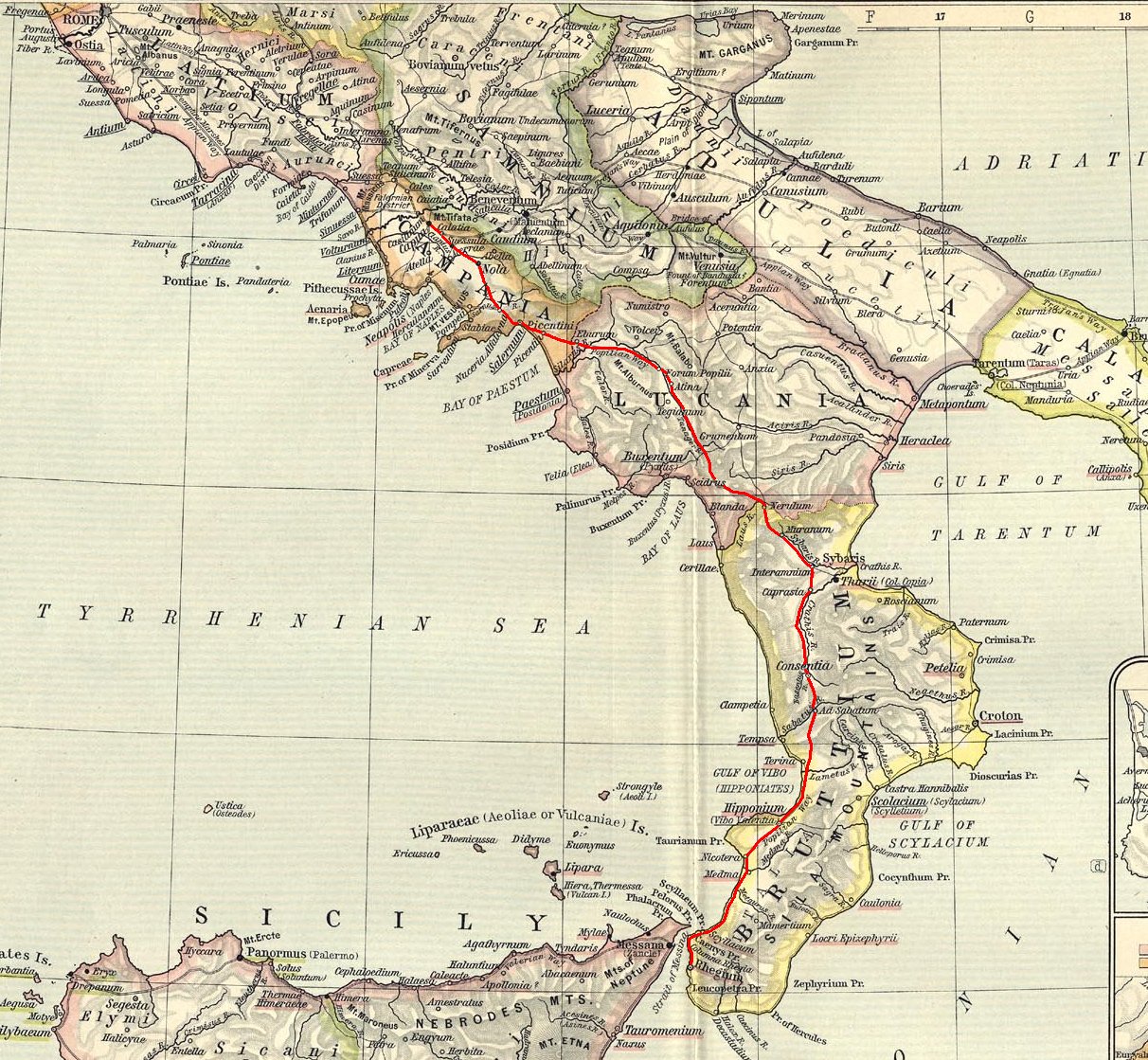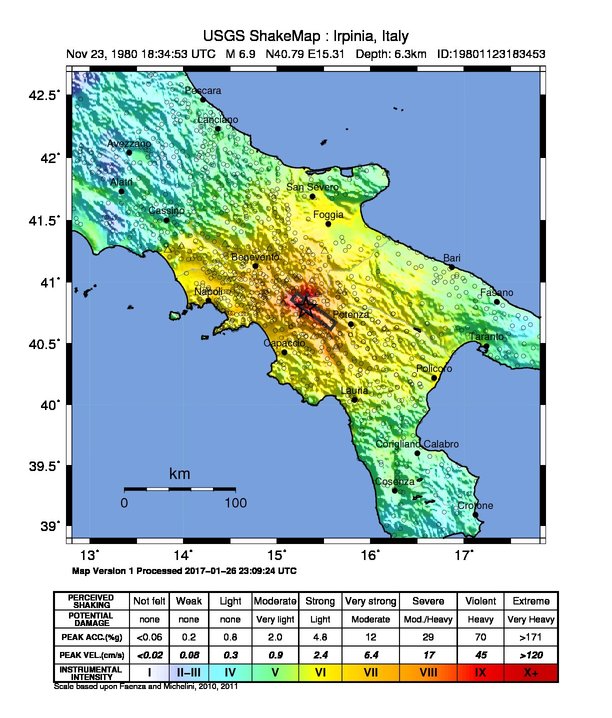|
Eboli
Eboli ( Ebolitano: ) is a town and ''comune'' of Campania, southern Italy, in the province of Salerno. An agricultural centre, Eboli is known mainly for olive oil and for its dairy products, among which the famous buffalo mozzarella from the area. History Archaeological excavations have shown that the Eboli area has been inhabited since the Copper and Bronze Ages. Also attested (starting from the 5th century BC) was the presence of the so-called Villanovan civilization. The ancient ''Eburum'' was a Lucanian city, mentioned by Pliny the Elder, not far away from the Campanian border. It laid above the Via Popilia, which followed the line taken by the modern railway. The Romans gave it the status of ''municipium''. The town was destroyed first by Alaric I in 410 AD, and then by the Saracens in the 9th and 10th centuries. Later it served as a stronghold of the Principality of Salerno, with a massive castle built by Robert Guiscard. During the 1930s Eboli was able to expand ... [...More Info...] [...Related Items...] OR: [Wikipedia] [Google] [Baidu] |
Battipaglia
Battipaglia () is a municipality (''comune'') in the province of Salerno, Campania, south-western Italy. Famed as a production place of buffalo mozzarella, Battipaglia is the economic hub of the Sele plain. History Formerly part of the ancient Greek colonies of the Magna Graecia, the municipal area used to host strategic Roman settlements during the late Republican- early Imperial times, like most of the southern Tyrrhenian coast. Archaeological excavations have brought to light several finds dating back to as early as the 3rd century BC pertaining to at least two villas. One of those was located in the vicinity of the coastline and was part of a larger thermal complex. The other was positioned internally and likely served as a productive belt between cereal crops in the plain and olive crops and vineyards on the hill. The town was first given its modern name in 1080 within a bureaucratic document of the Duchy of Apulia and Calabria addressed to the local Catholic diocese ... [...More Info...] [...Related Items...] OR: [Wikipedia] [Google] [Baidu] |
Sele (river)
The Sele is a river in southwestern Italy. Originating from the Monti Picentini in Caposele,Meaning "top of the Sele" it flows through the region of Campania, in the provinces of Province of Salerno, Salerno and Province of Avellino, Avellino. Its mouth is in the Gulf of Salerno, on the Tyrrhenian Sea, at the borders between the municipalities of Eboli and Capaccio (not too far from Paestum), in the beginning point of Cilentan Coast. History The important Greek site of Foce del Sele, a sanctuary complex dedicated to the goddess Hera, is at the ancient mouth of the river, though little remains on the site; the relief friezes and other finds are now in the museum at Paestum. At this period the Sele represented the border of the Greek and Etruscan zones of influence along the coast. Hydrography In terms of average water discharge of southern Italian rivers, it is second only to the Volturno. Its main tributaries are the Tanagro, the Calore Lucano and the Tenza (river), Tenza. In anci ... [...More Info...] [...Related Items...] OR: [Wikipedia] [Google] [Baidu] |
Albanella
Albanella is a town and ''comune'' in the province of Salerno in the Campania region of south-western Italy. It is located 51 kilometers from the city of Salerno. The town slogan is , which translates to "the land of the olive trees" in English. Olive oil is one of the principal products of the town. Geography The town is located halfway between Monti Alburni and the Gulf of Salerno, on a hill commanding the plain of the Sele River. The rest of the municipal area is either flat or, between the Sele and Calore Lucano rivers to the north and Monte Soprano (1,082 m) to the south, hilly. History Lying on hills rich with olive trees, Albanella was founded in the 11th century by refugees from Paestum, seeking for a site which would be safe from Saracen raids. The most ancient settlement is in fact on the hill's side which is hidden from the sea. Several archaeological findings are now in the National Archaeological Museum in Paestum and in the National Archaeological Museum of Nap ... [...More Info...] [...Related Items...] OR: [Wikipedia] [Google] [Baidu] |
Campagna
Campagna (Italian: ) is a small town and ''comune'' of the province of Salerno, in the Campania region of Southern Italy. Its population is 17,148. Its old Latin name was Civitas Campaniae (City of Campagna). Campagna is located in one of the valleys of the Picentini Mountains, at an altitude of 270 meters above sea level. History The first records of the area date back to the ninth century in the Lombard period. The position of the town was strategic for enemies attacks during the Middle Ages. Lately, the town became an important cultural and religious center. It was the seat of bishops until 1973, when the Diocese of Campagna merged with the Archdiocese of Salerno. During the Second World War, Campagna was a temporary home for many Jews thanks to Giovanni Palatucci and his uncle Giuseppe Maria Palatucci. People arrived from the north of Italy and Campagna citizens hid those people in the basements of the churches. Giovanni Palatucci was later honoured as a Righteous Among t ... [...More Info...] [...Related Items...] OR: [Wikipedia] [Google] [Baidu] |
Province Of Salerno
The Province of Salerno ( it, Provincia di Salerno) is a province in the Campania region of Italy. __TOC__ Geography The largest towns in the province are: Salerno, the capital, which has a population of 131,950; Cava de' Tirreni, Battipaglia and Nocera Inferiore, all having around 50,000 inhabitants. The province has an area of , and a total population of about 1.1 million. There are 158 ''comuni'', the one with the largest area being Eboli. Tourism The Amalfi Coast — a UNESCO World Heritage Site since 1997 — is located within the province, attracting tens of thousands of tourists from all around the world every year. The province also comprises the Cilento coast, whose sea quality is considered among the best in Italy. Formerly a notable center of Magna Graecia, Paestum houses a wide complex of well-preserved ancient Greek temples. One of the features of the rugged country-side is '' Gole del Calore di Felitto'', an area of gorges between Felitto and Magliano Ve ... [...More Info...] [...Related Items...] OR: [Wikipedia] [Google] [Baidu] |
Province Of Salerno
The Province of Salerno ( it, Provincia di Salerno) is a province in the Campania region of Italy. __TOC__ Geography The largest towns in the province are: Salerno, the capital, which has a population of 131,950; Cava de' Tirreni, Battipaglia and Nocera Inferiore, all having around 50,000 inhabitants. The province has an area of , and a total population of about 1.1 million. There are 158 ''comuni'', the one with the largest area being Eboli. Tourism The Amalfi Coast — a UNESCO World Heritage Site since 1997 — is located within the province, attracting tens of thousands of tourists from all around the world every year. The province also comprises the Cilento coast, whose sea quality is considered among the best in Italy. Formerly a notable center of Magna Graecia, Paestum houses a wide complex of well-preserved ancient Greek temples. One of the features of the rugged country-side is '' Gole del Calore di Felitto'', an area of gorges between Felitto and Magliano Ve ... [...More Info...] [...Related Items...] OR: [Wikipedia] [Google] [Baidu] |
Saint Vitus
Vitus (), whose name is sometimes rendered Guy or Guido, was a Christian martyr from Sicily. His surviving hagiography is pure legend. The dates of his actual life are unknown.Basil Watkins, ''The Book of Saints: A Comprehensive Biographical Dictionary'', 8th rev. ed. (Bloomsbury, 2016), p. 758.Donald Attwater, ''The Avenel Dictionary of Saints'' (Avenel Books, 1981), p. 338. He has for long been tied to the Sicilian martyrs Modestus and Crescentia but in the earliest sources it is clear that these were originally different traditions that later became combined.David Hugh Farmer, ''The Oxford Dictionary of Saints'', 5th rev. ed. (Oxford University Press, 2011), s.v. "Vitus (Guy), Modestus, and Crescentia". The figures of Modestus and Crescentia are probably fictitious. According to his legend, he died during the Diocletianic Persecution in AD 303. In the Middle Ages, he was counted as one of the Fourteen Holy Helpers. In Germany, his feast was celebrated with dancing before his ... [...More Info...] [...Related Items...] OR: [Wikipedia] [Google] [Baidu] |
Alluvial Plain
An alluvial plain is a largely flat landform created by the deposition of sediment over a long period of time by one or more rivers coming from highland regions, from which alluvial soil forms. A floodplain is part of the process, being the smaller area over which the rivers flood at a particular period of time, whereas the alluvial plain is the larger area representing the region over which the floodplains have shifted over geological time. As the highlands erode due to weathering and water flow, the sediment from the hills is transported to the lower plain. Various creeks will carry the water further to a river, lake, bay, or ocean. As the sediments are deposited during flood conditions in the floodplain of a creek, the elevation of the floodplain will be raised. As this reduces the channel floodwater capacity, the creek will, over time, seek new, lower paths, forming a meander (a curving sinuous path). The leftover higher locations, typically natural levees at the margins ... [...More Info...] [...Related Items...] OR: [Wikipedia] [Google] [Baidu] |
Via Popilia
__NOTOC__ The Via Popilia is the name of two different ancient Roman roads begun in the consulship of Publius Popilius Laenas. One was in southern Italy and the other was in north-eastern Italy. Road in southern Italy The road in southern Italy ran from the Via Appia at Capua to Rhegium on the Straits of Messina. An archaeological discovery of part of its itinerarium on an engraved on stone (The Polla Tablet) brought it more fully into the light of history. It ran a distance of through southern Campania and Calabria, through the interior of the country, not along the coast. There are the remains of at least one Roman bridge along the road, the Ponte sul Savuto. Road in north-eastern Italy The road in north-eastern Italy connected ''Ariminum'' (modern Rimini) to Atria (modern Adria). At Atria it joined the Via Annia which went to ''Patavium'' (modern Padua), Altinum and Aquileia. It was an extension of the Via Flaminia which connected Rome and ''Ariminum''. ''Ariminum'' was als ... [...More Info...] [...Related Items...] OR: [Wikipedia] [Google] [Baidu] |
Monti Picentini
300px, Rocky limestone landscape in the monti Picentini. The Monti Picentini is a mountain range and national park in southern Italy, part of the Apennines, traditionally part in the Campanian Apennines. They are included between the Monti Lattari, the Partenio mount, the Irpinian plateau and the Sele river valley. The chain is included in the Monti Picentini Regional Park. The highest peak is the Monte Cervialto (1,809 m), in the eastern sector, followed by the Monte Terminio (1,783 m), which is instead in the western part of the range. Geology, landscape and climate Overview The range is mostly made up of dolomite and limestone rocks, different from the surroundings areas, which are dominated by sandstone rocks. A central depression, joining the valleys of the Calore Irpino and Tusciano rivers, divided the range in two geologically different sectors: the western one, where rocks are predominantly dolomite, and the eastern one, mostly made up of limestone and has ... [...More Info...] [...Related Items...] OR: [Wikipedia] [Google] [Baidu] |
Monte Raione
Monte Raione is a mountain of Campania, Italy Italy ( it, Italia ), officially the Italian Republic, ) or the Republic of Italy, is a country in Southern Europe. It is located in the middle of the Mediterranean Sea, and its territory largely coincides with the homonymous geographical re .... It has an elevation of 1,014 metres above sea level. Sources Mountains of Campania Mountains of the Apennines {{Campania-geo-stub ... [...More Info...] [...Related Items...] OR: [Wikipedia] [Google] [Baidu] |
1980 Irpinia Earthquake
The 1980 Irpinia earthquake ( it, Terremoto dell'Irpinia) took place in Italy on 23 November 1980, with a moment magnitude of 6.9 and a maximum Mercalli intensity of X (''Extreme''). It left at least 2,483 people dead, at least 7,700 injured, and 250,000 homeless. Event The quake struck at 18:34 UTC (19:34 local), centered on the village of Castelnuovo di Conza, Campania, Southern Italy. The first jolt was followed by 90 aftershocks. There were three main shocks, each with epicenters in a different place, within 80 seconds. The largest shock registered a peak acceleration of 0.38g, with 10 seconds of motion greater than 0.1g. The three main shocks combined produced 70 seconds of shaking greater than 0.01g. Thus the shaking was severe and lasted a long time. Towns in the province of Avellino were hit the hardest. In Sant'Angelo dei Lombardi, 300 were killed, including 27 children in an orphanage, and eighty percent of the town was destroyed and many historical buildings were lef ... [...More Info...] [...Related Items...] OR: [Wikipedia] [Google] [Baidu] |






